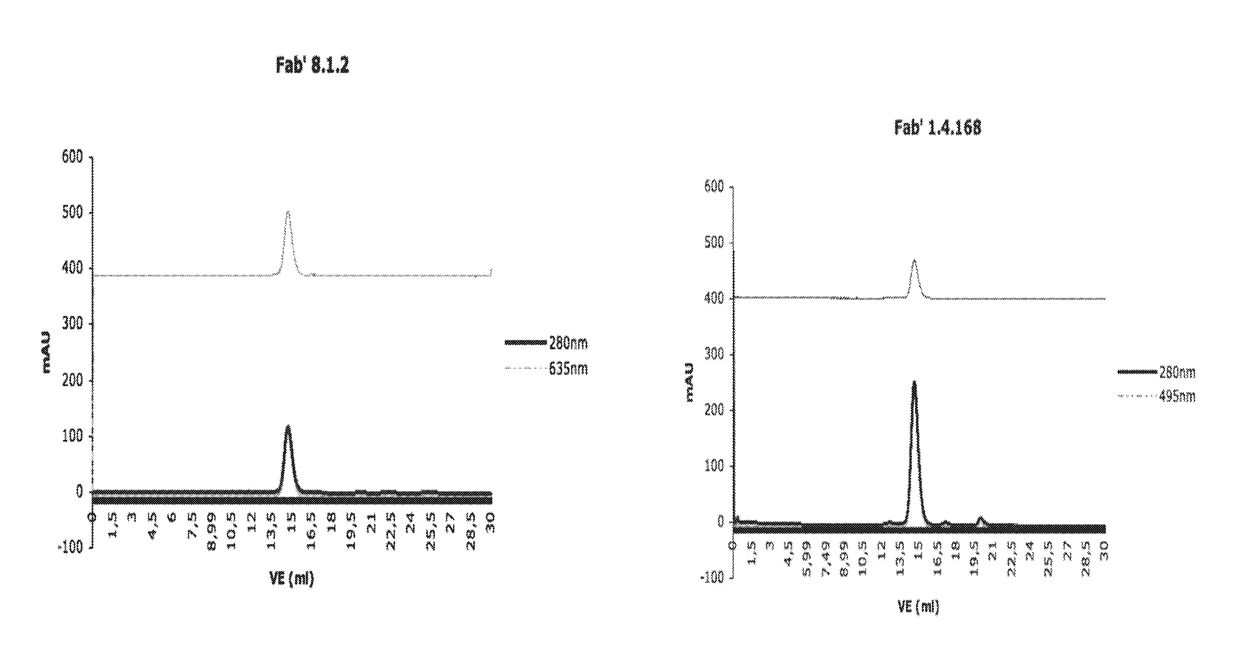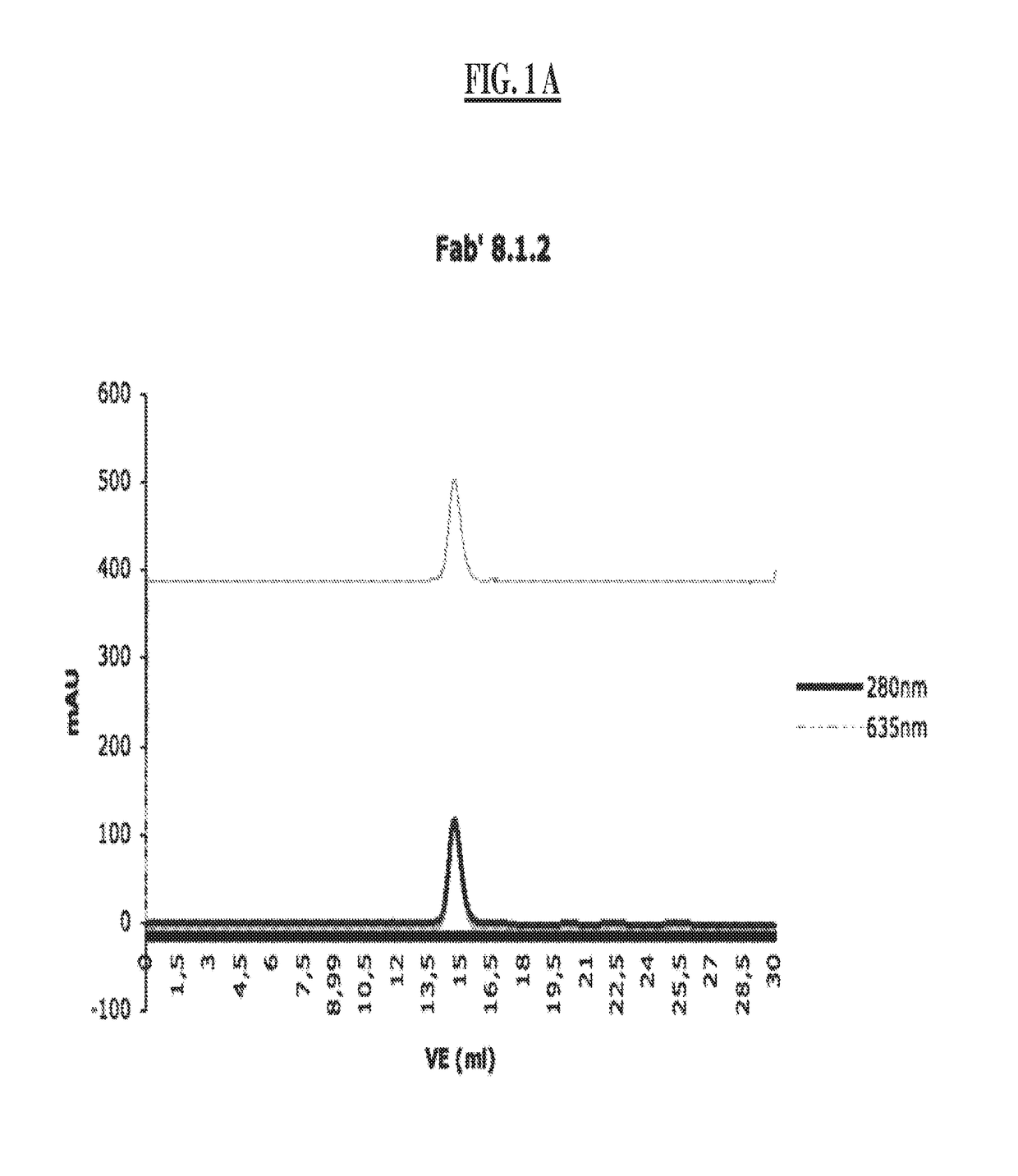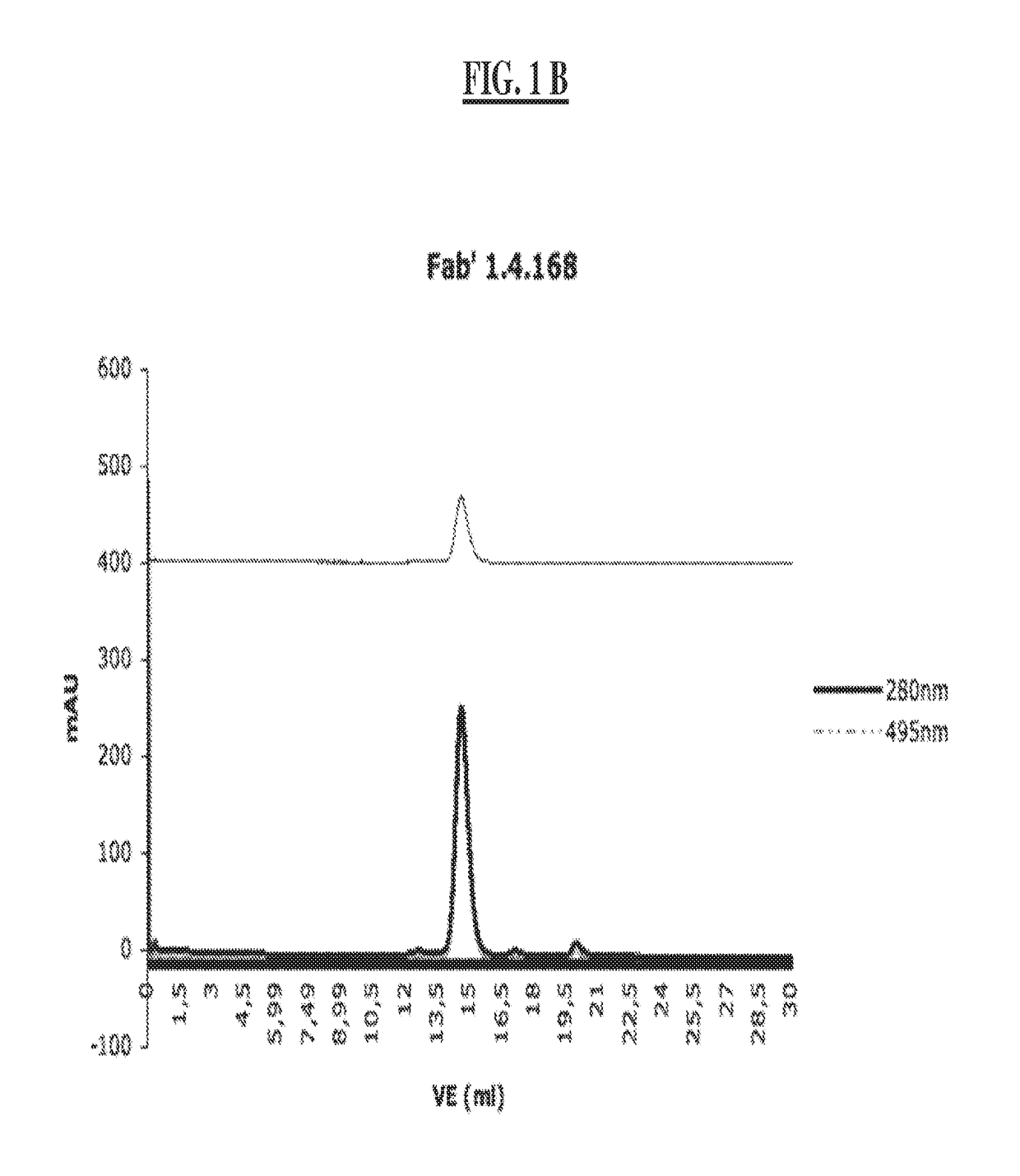Detection of a posttranslationally modified polypeptide by a bivalent binding agent
a technology of bivalent binding agent and polypeptide, which is applied in the field of detection of posttranslationally modified polypeptides by bivalent binding agents, can solve the problems of detection and quantification of secondarily modified polypeptides, and complex modifications in one protein recently discovered,
- Summary
- Abstract
- Description
- Claims
- Application Information
AI Technical Summary
Benefits of technology
Problems solved by technology
Method used
Image
Examples
example 1
[0266]Bivalent Binding Agent to Troponin T
[0267]1.1 Monoclonal Antibodies and Fab′-Fragments
[0268]Two monoclonal antibodies binding to human cardiac Troponin T at different, non-overlapping epitopes, epitope A′ and epitope B′, respectively, were used. Both these antibodies are used in the current Roche ELECSYS™ Troponin T assay, wherein Troponin T is detected in a sandwich immuno assay format.
[0269]Purification of the monoclonal antibodies from culture supernatant was carried out using state of the art methods of protein chemistry.
[0270]The purified monoclonal antibodies are protease digested with either pre-activated papain (anti-epitope A′ MAb) or pepsin (anti-epitope B′ MAb) yielding F(ab′)2 fragments that are subsequently reduced to Fab′-fragments with a low concentration of cysteamin at 37° C., i.e. A and B, respectively, in Formula I (A-a′:a-S-b:b′-B). The reaction is stopped by separating the cysteamin on a SEPHADEX® G-25 column (GE Healthcare) from the polypeptide-containing...
example 2
[0309]Bivalent Binding Agent to Phosphorylated IGF-1R
[0310]2.1 Monoclonal Antibody Development (mAb 8.1.2, mAb 1.4.168 and mAB 30.4.33)
[0311]a) Immunization of Mice
[0312]BALB / C mice are immunized at week 0, 3, 6 and 9, respectively. Per immunization 100 μg of the conjugate comprising the phosphorylated peptide pIGF-1R (1340-1366) (SEQ ID NO:11) is used. This peptide had been phosphorylated at tyrosine 1346 (=1346-pTyr) and coupled to KLH via the C-terminal cysteine (=Aoc-Cys-MP-KLH-1340) to yield the conjugate used for immunization. At weeks 0 and 6, respectively, the immunization is carried out intraperitoneally and at weeks 3 and 9, respectively, subcutaneously at various parts of the mouse body.
[0313]b) Fusion and Cloning
[0314]Spleen cells of immunized mice are fused with myeloma cells according to Galfre G., and Milstein C., Methods in Enzymology 73 (1981) 3-46. In this process ca 1×108 spleen cells of an immunized mouse are mixed with 2×107 myeloma cells a(P3×63-Ag8653, ATCC CR...
example 3
[0406]Bivalent Binding Agent to Phosphorylated HER3
[0407]The receptor tyrosine kinase family of HER proteins consists of four members: HER1, HER2, HER3 and HER4. Upon ligand binding, the receptors dimerize as homo- or heterodimers in various ways to trigger different signal transduction pathways, depending on the ligand and the expression levels of each of the four family members. For example, HER3 undergoes a conformational shift when it is bound to its ligands Neuregulin1 (NRG1) or Neuregulin2 (NRG2) and the HER3 dimerization domain is exposed and it can interact with other HER receptors. Upon dimerization, HER3 becomes phosphorylated. In this example, we developed a dual binder to detect the phosphorylated form of HER3.
[0408]3.1 Monoclonal Antibody Development (mAb 7.2.32 and mAb 4.1.15)
[0409]a) Immunization of Mice
[0410]Balb / c and NMRI mice are immunized with HER3(1243-1267)[KLH-MP-Cys-UZU-1243]amide or pHER3(1283-1295)[pTyr1289; KLH-MP-Cys-UZU-1283]amide. The initial immunizati...
PUM
| Property | Measurement | Unit |
|---|---|---|
| length | aaaaa | aaaaa |
| volume | aaaaa | aaaaa |
| volume | aaaaa | aaaaa |
Abstract
Description
Claims
Application Information
 Login to View More
Login to View More - R&D
- Intellectual Property
- Life Sciences
- Materials
- Tech Scout
- Unparalleled Data Quality
- Higher Quality Content
- 60% Fewer Hallucinations
Browse by: Latest US Patents, China's latest patents, Technical Efficacy Thesaurus, Application Domain, Technology Topic, Popular Technical Reports.
© 2025 PatSnap. All rights reserved.Legal|Privacy policy|Modern Slavery Act Transparency Statement|Sitemap|About US| Contact US: help@patsnap.com



